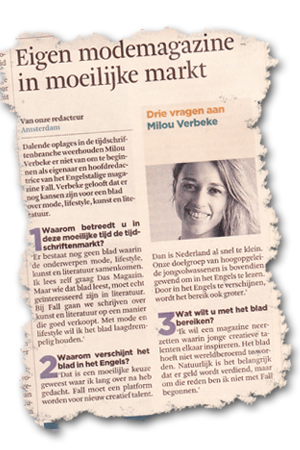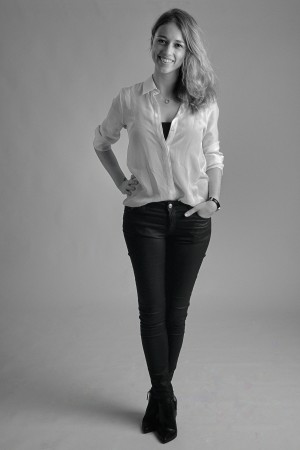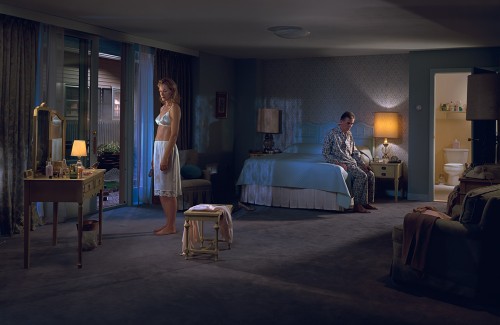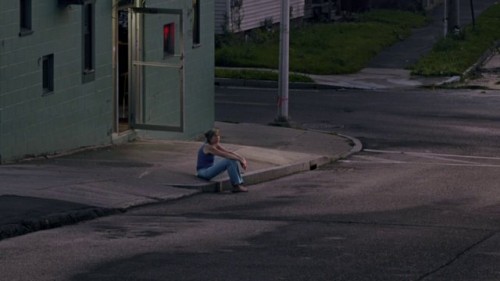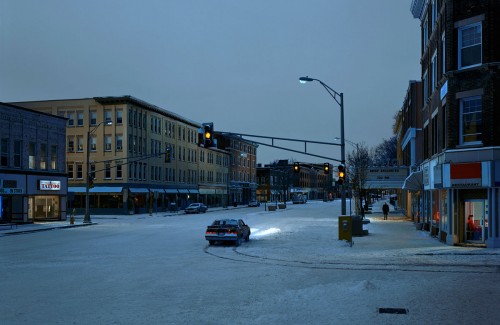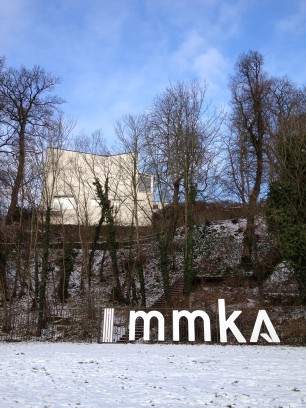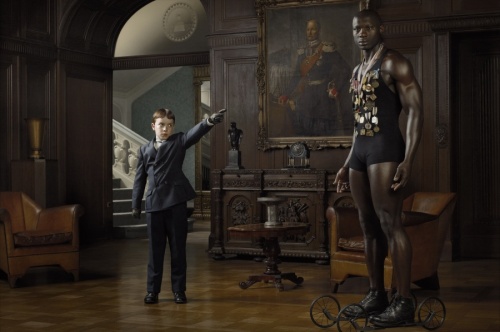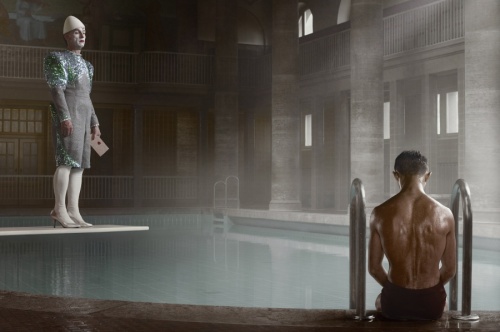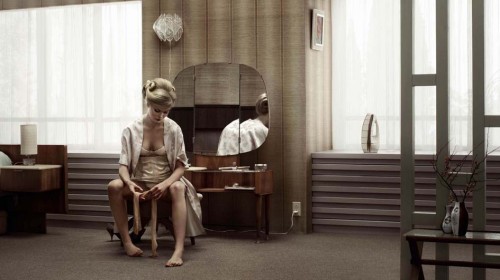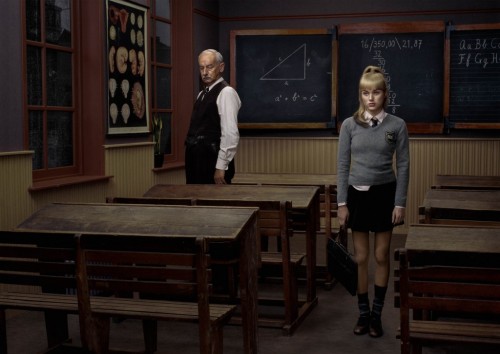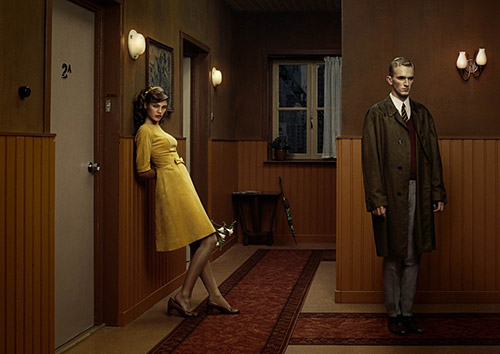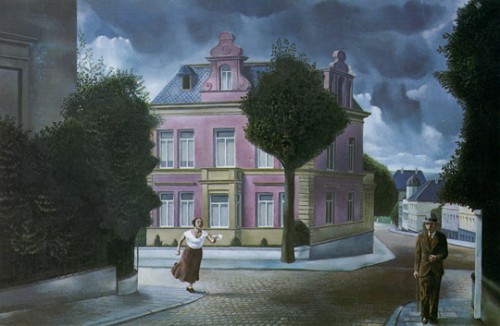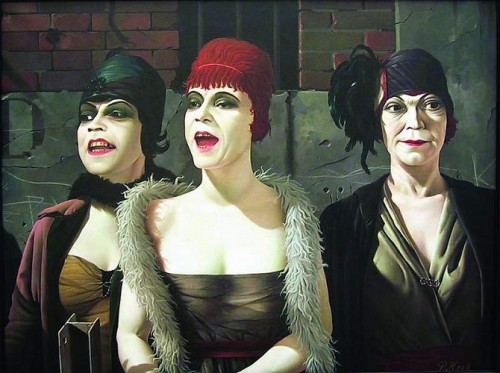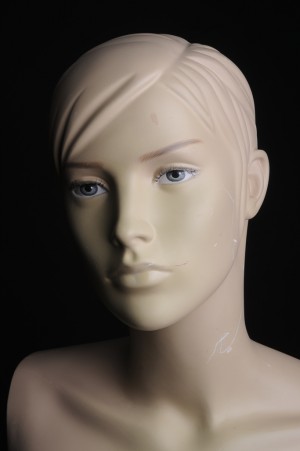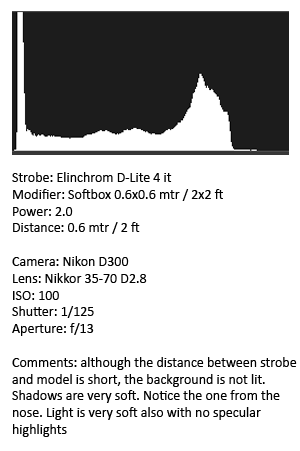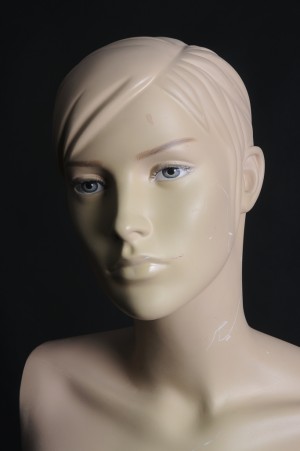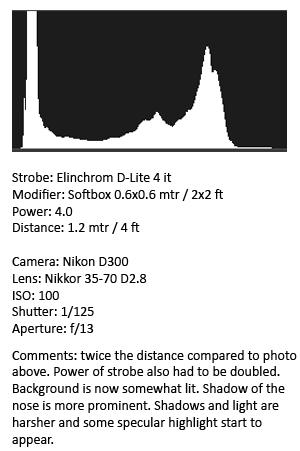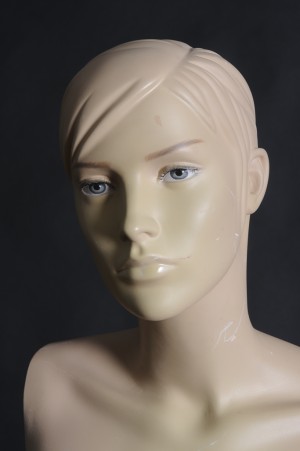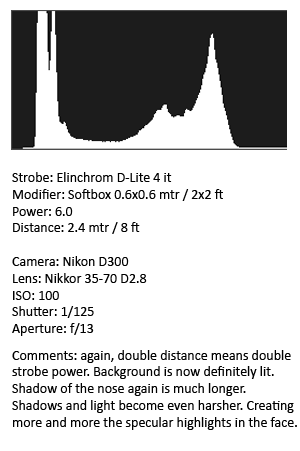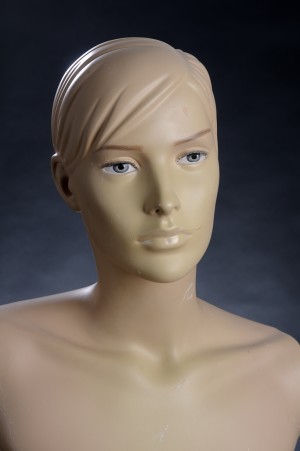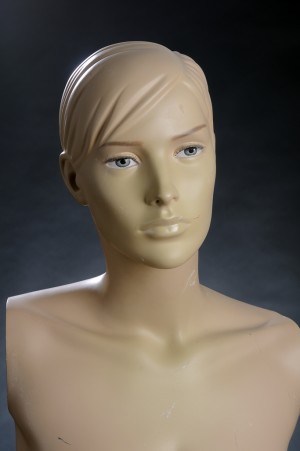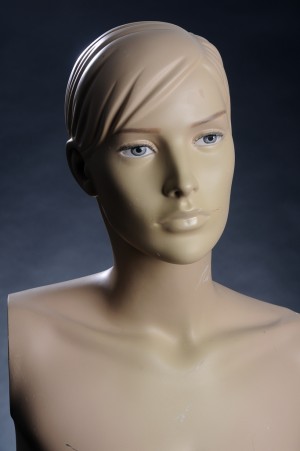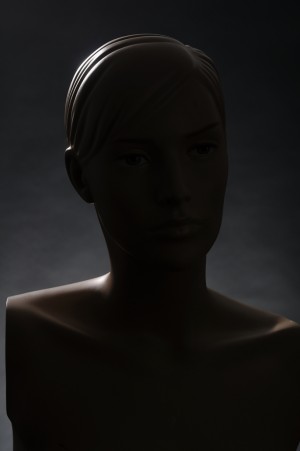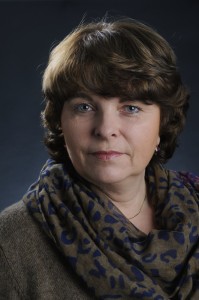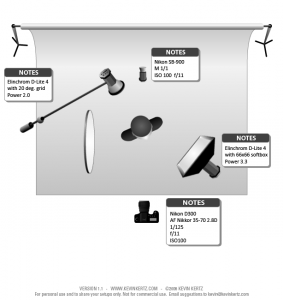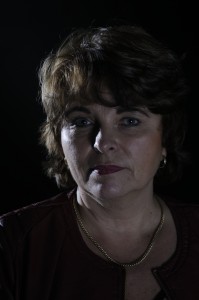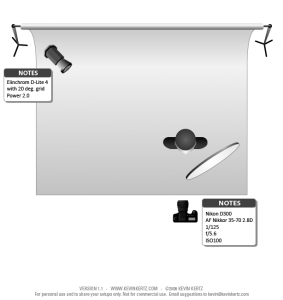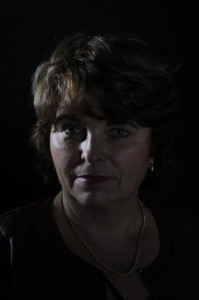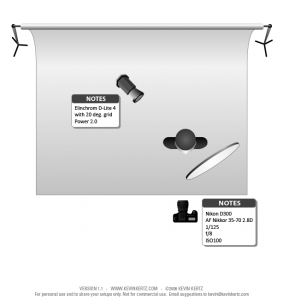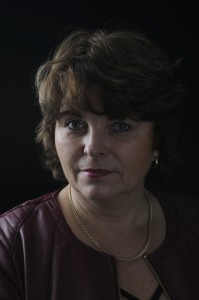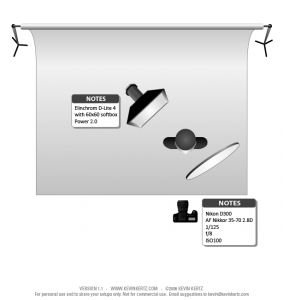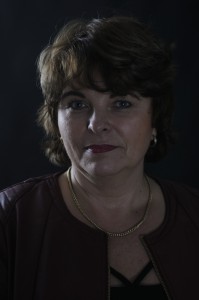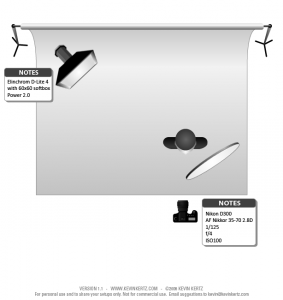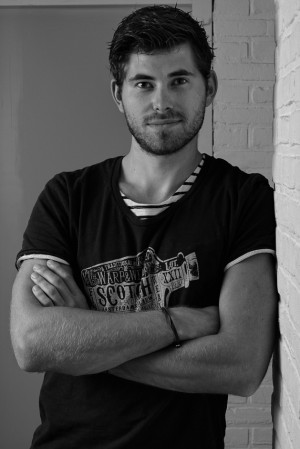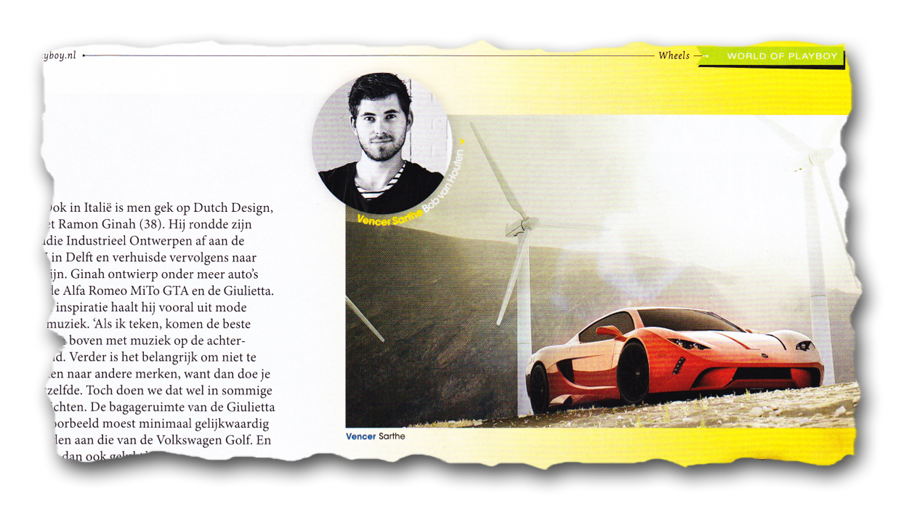This saturday, November 10, the Dutch Photo Association (Fotobond) held their one-day annual event with lectures and workshops on various topics. In the aftrnoon I attended the workshop on Directorial Photography by Jean Marie Piron (www.jeanmariepiron.be) from Belgium.
The term Directorial Photography was coined by critic A.D. Coleman, not that long ago, in 1976. What sets photography apart from any other art form is that it is always, in one way or the other, based on something real. A painter can draw a painting of something that only exists in his or her mind. It doesn’t necessarily have to be there in the real world. The same applies to a sculptor. He or she can carve a statue out of stone of something that, again, only lives in his or her head. And, yes, you can say the same about writing. An author can write a 100% fiction story. Photography, however, must be based on something that is real, that exists. It’s impossible to take a picture of something that doesn’t exist. This is one of the reasons why people, in general, tend to believe that what they see on the picture is real. Directorial Photography refers to a form where pictures are well thought-out, planned, setup, staged, prepared, etc. Manipulated, if you like, but not necessarily with post-processing editing tools like Photoshop – although it can be a part of it. Many times the pictures mislead and fool you: you’re not seeing what you think you are seeing.
During the workshop many Dutch photographers that practice this form of photography were mentioned and examples of their work were shown. For whatever reason, Holland happens to have quite a number of active photographers in this area and most of them with high standards. I might dedicate a separate post on this later. Probably the most famous of them all is Erwin Olaf. You can see his work at www.erwinolaf.com. If you do, have a look at his series Rain, Hope, and Grief (all under Portfolio).
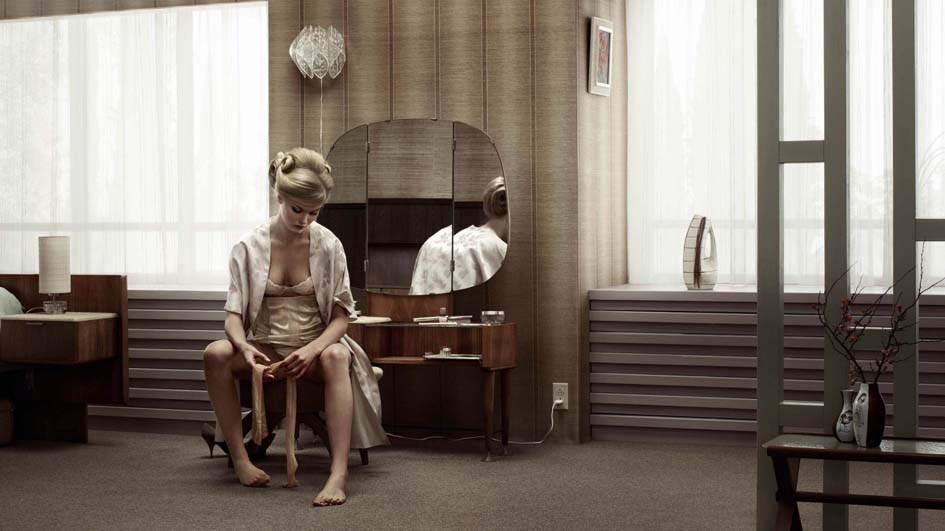
As examples of other – international – big names in the area of Directorial Photography were mentioned: Duane Michals, Cindy Sherman and Jeff Wall. To read more on Cindy Sherman click here to see what I wrote after I visited her exhibition in New York earlier this year. There’s plenty of stuff to be found on internet, but I just want to refer you to a small video clip of Jeff Wall “I begin by not photographing”. To see, click here.
I was impressed by Duane Michal’s series called “Things are queer“. I recommend you do some searching on the internet to see and understand what it’s all about. A famous quote by Duane Michals:
“I think photographs should be provocative and not tell you what you already know. It takes no great powers or magic to reproduce somebody’s face in a photograph. The magic is in seeing people in new ways”
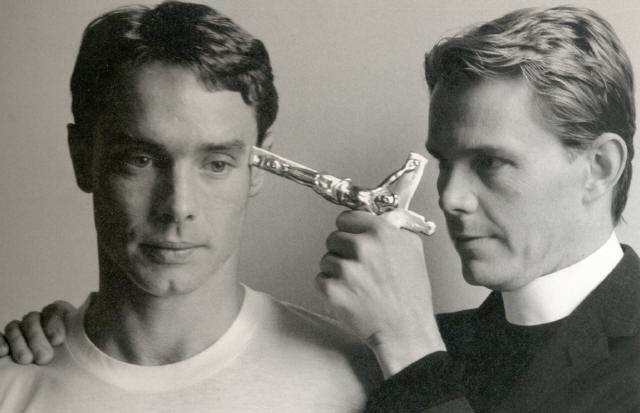
At the end some time was spent on discussing photographs that for a very long time were considered to be real, that is not staged or directed. One example of this is Robert Capa’s famous picture of the soldier who was shot in combat during the Spanish Civil War. By now its publicly known that it’s more than likely this picture was staged, setup. Not real. Another example is Robert Doisneau’s very well-known picture (The Kiss or Le Baiser de l’hôtel de ville) of the kissing couple in front of the town hall in 1950 in Paris. It was originally included in a series on Parisien streetlife Doisneau did for Life Magazine. It was just one of the pictures then. Many years later it was used for calendars, postcards, posters, etc. and became immensly popular worldwide. The kissing woman, a 20 year old actrice called Francoise Delbart, wanted some of the money a lot of people were suddenly making. She started a courtcase, but the claim was rejected. Because of the courtcase, however, Doisneau had to reveal that the photograph was staged and not just a snapshot of the busy streetlife. It was directed! Back in 1950 the woman was given an original print of the picture, with Doisneau’s signature and stamp on it, as a reward for her contribution. She sold it at an auction in 2005 for 155.000 euro.
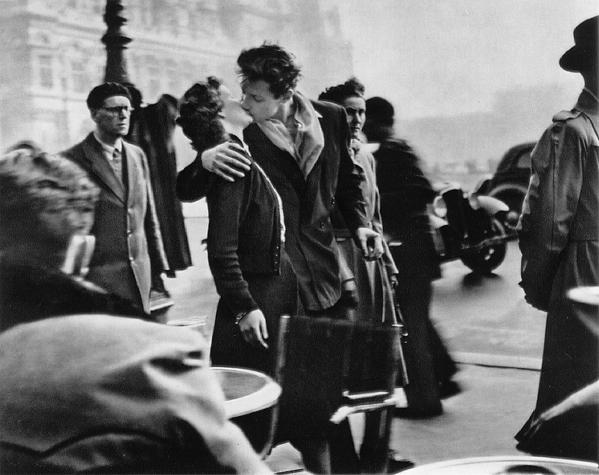 The third and last picture we discussed was about the Soviet flag being raised at the roof of the Reichstag building in Berlin at the end of World War II. A photo by Red Army photographer Yevgeny Khaldei. The story that goes with this picture is that Stalin apparently wanted a photo of a waving Soviet flag to symbolize his power and strength, similar to the photo of the American flag being planted on the island of Iwo Jima. The Reichstag building was seized on April 30th and a flag was hoisted late that night when it was too dark to take a picture. The next day, the flag was removed by Germans. On May 2nd the Red Army managed to control the entire building. According to Khaldei himself, when he arrived to the Reichstag, he simply asked the soldiers who happened to be passing by to help him with staging of the photoshoot. Two soldiers raised the flag. But that’s not the end. It goes even further. The actual photo was also manipulated afterwards. Censors at TASS, the Soviet press agency, noticed that one of the soldiers was wearing two wristwatches. This could easily be interpreted as an indication of looting by the Soviet soldiers. They asked Khaldei to edit the photograph and remove one of the watches. While he was on it, he also added some smoke to give the picture an even more dramatic effect.
The third and last picture we discussed was about the Soviet flag being raised at the roof of the Reichstag building in Berlin at the end of World War II. A photo by Red Army photographer Yevgeny Khaldei. The story that goes with this picture is that Stalin apparently wanted a photo of a waving Soviet flag to symbolize his power and strength, similar to the photo of the American flag being planted on the island of Iwo Jima. The Reichstag building was seized on April 30th and a flag was hoisted late that night when it was too dark to take a picture. The next day, the flag was removed by Germans. On May 2nd the Red Army managed to control the entire building. According to Khaldei himself, when he arrived to the Reichstag, he simply asked the soldiers who happened to be passing by to help him with staging of the photoshoot. Two soldiers raised the flag. But that’s not the end. It goes even further. The actual photo was also manipulated afterwards. Censors at TASS, the Soviet press agency, noticed that one of the soldiers was wearing two wristwatches. This could easily be interpreted as an indication of looting by the Soviet soldiers. They asked Khaldei to edit the photograph and remove one of the watches. While he was on it, he also added some smoke to give the picture an even more dramatic effect.
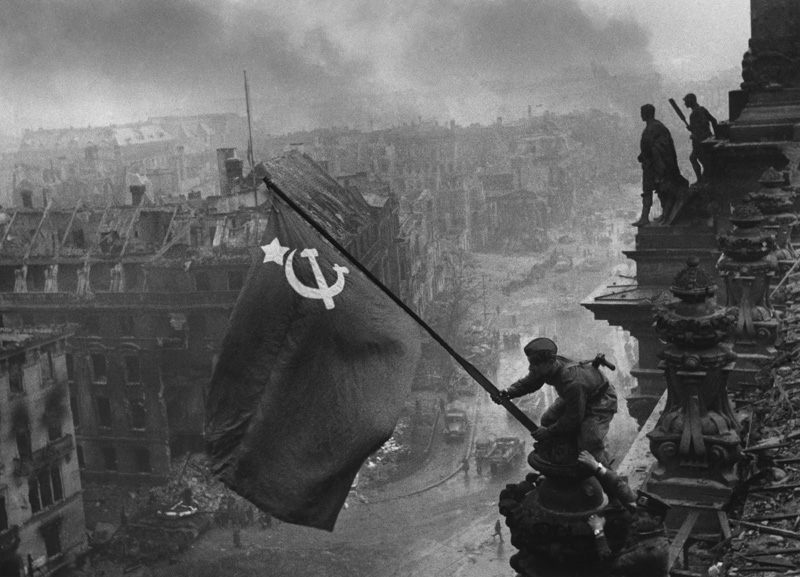 So, in summary, it is fairly easy to understand what is meant by Directorial Photography. All pictures that are planned, though-out, setup, created, manipulated, staged, directed, etc. fall into this category. The work of Erwin Olaf, for instance, is a very good and obvious illustration of what Directorial Photography is all about. Then you have a large middle part of the spectrum where it is less obvious that you’re dealing with staged photographs. And then, at the opposite side of the spectrum, you have the photographs which you didn’t expect to be directed because they look so natural and real. Like snapshots, when you first see them. But don’t get fooled, though. Also the pictures of Capa, Doisneau and Khaldei are all perfect examples of Directorial Photography.
So, in summary, it is fairly easy to understand what is meant by Directorial Photography. All pictures that are planned, though-out, setup, created, manipulated, staged, directed, etc. fall into this category. The work of Erwin Olaf, for instance, is a very good and obvious illustration of what Directorial Photography is all about. Then you have a large middle part of the spectrum where it is less obvious that you’re dealing with staged photographs. And then, at the opposite side of the spectrum, you have the photographs which you didn’t expect to be directed because they look so natural and real. Like snapshots, when you first see them. But don’t get fooled, though. Also the pictures of Capa, Doisneau and Khaldei are all perfect examples of Directorial Photography.
So remember: you’re not always seeing what you think you’re seeing.
